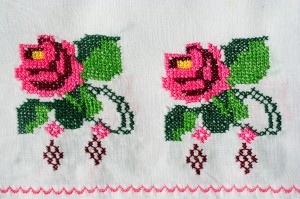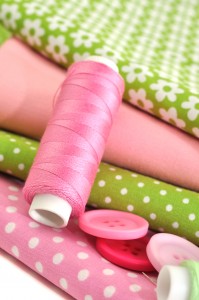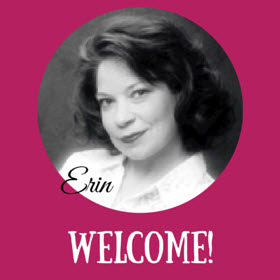Sewing Machine Reviews – Erin Says Sew
Hi and welcome! My name is Erin and this site has been a labor of love for over four years now. In that time, I’ve written over 50 sewing machine reviews and a number of articles intended to help you find the best model for you.
I started this as a resource for beginners who have more questions than answers when they start shopping. My mother, an experienced sewer and crafter, said that even she had trouble trying to pick a machine for my young nieces. There were just so many choices and things had changed so drastically from the machine she had been using for years that it left her confused and unsure of which one she should buy. She knew it must be even more challenging for those just starting out.
This site has built up over 2000 comments from people who have asked questions, shared information, and discussed their experience with a particular model. It’s been a pleasure to meet so many different people and help participate in their selection process.
Following is a guide to help you get started.
Beginner Sewing Machine Reviews
If you haven’t sewn before or it’s been years since you touched a machine, a product description on a retail site isn’t enough to tell you the capabilities of any particular model. You want to make sure that when you finally buy one and bring it home it will actually work for the kinds of projects you want to complete.
The reviews on this site are crafted with that in mind. I dig into each machine so thoroughly that it takes days to complete my research. I read the manual, read all the online reviews from actual users, demo a machine when it’s nearby, watch videos, and make a list of all the stitches and features.
All of the information is then assembled and included in a post. Each review follows a common template discussing each item in order so that if you want to see everything there is about two models, you could print out the posts and see information about stitches in the same spot on each page.
A list of all the machines I’ve reviewed can be found in the tab marked Compare at the top of this site.
First Sewing Machines for Children
Sewing is a skill that can serve beginners for a long time. There are so many neat things to make! Kids like the ability to be creative, too, and getting started early will help them explore the steps they need to follow in order to their ideas into finished projects.
There are lots of machines that children can safely use and many are quite affordable. I’ve avoided reviewing the ones that are more toys than real machines, though.
For a list of great first sewing machines, see the article I’ve written about the best models that cost less than $100.
Machines with Embroidery
 Sewing machines can do so much more than they used to that some of them will even do embroidery. These are called combination machines. While most are pretty expensive, there are a couple of budget models available that do a great job. I’ve included those on this site.
Sewing machines can do so much more than they used to that some of them will even do embroidery. These are called combination machines. While most are pretty expensive, there are a couple of budget models available that do a great job. I’ve included those on this site.
If the thought of adding embroidery to your own towels, pillowcases, cloth napkins, or clothing sounds like fun (and it’s quite addicting, actually), then you might want to take a look at the choices that include embroidery features.
Sewing Machines for Beginner Quilters
I have several close friends and family members who only use their sewing machines for quilting. If that’s what you’ll be doing with the machine you buy, there are certain features you’ll want to look for in order to help you.
At the very least, you’ll want a machine with a quilting stitch, that is compatible with a walking foot, has a nice sized “throat space” (the area between the needle and the right side of the machine) to accommodate large amounts of fabric, and a machine that can handle thicker layers of material.
You’ll find several great options in the pages of this site.
Heavy Fabrics and Denim
If you already know that you’ll be working with really heavy fabrics like denim and leather on a regular basis, you also have a special set of needs and should focus on machines that have a extra power built in (this might be a DC motor or a manufacturer’s special power feature) and perhaps presser feet with lift buttons to help them get over thicker seams.
While most beginner sewing machines can handle a variety of fabrics, it’s the degree of use that matters most. Just hemming a pair of jeans can be done with many models but if you’re going to be working on upholstery material, making your own jeans, or working on leather handbags on a regular basis then more power will mean your machine will hold up longer and help you get through your projects more quickly.
Computerized vs. Mechanical
When I was in junior high, all machines were mechanical. Today, there are lots of sewing machines that are computerized. Computerized machines have computer components inside that control certain operations. These machines often have more stitches to choose from than a mechanical machine but they also have more pieces that could break down.
They might have touch screens, LED screens, large selections of decorative stitches, buttons to control the starting and stopping of the machine or the overall speed, and programmable tasks. They can be extremely convenient and automate things that were previously done manually like raising and lowering the needle.
Most beginners will adapt easily to a computerized model as we’ve all become more experienced with today’s push-button controls on our appliances, phones and computers.
If you’re technology-adverse, don’t be afraid to start out with a mechanical machine for beginners as they’re quite capable; they just don’t have some of the same automation.
Compare Features Side by Side
Your challenge isn’t going to be to find one machine you like – it’s going to be choosing just one out of the many options you find that all look appealing. That’s where the confusion sets in.
 Start with a list of the kinds of sewing you want to be able to do with your machine. Each kind of sewing has a basic set of requirements that you’ll need to have. That will include stitches you’ll want and presser feet options.
Start with a list of the kinds of sewing you want to be able to do with your machine. Each kind of sewing has a basic set of requirements that you’ll need to have. That will include stitches you’ll want and presser feet options.
Those are your “must haves”. Once you know what those are you can add in the “nice to haves” like additional automation, a large sized machine, a needle threader, etc.
When you’ve settled on a few choices, you can use the button at the top of this page marked Machine Finding Wizard to select a few models to compare side by side. This will give you a list of all the features for each machine as long as I’ve done a review of those models.
You can also use the tab at the top marked Compare to see a list of all the machines with some high level comparison information.
How I Find the Best Rated Machines
I could spend the next few years doing reviews every day and probably still not keep up with the market. So how do I decide which are the best rated machines? I read the websites of the top manufacturers in the market, study the top online retailers and their product inventories, look at overall consumer ratings and comments, and consider the longevity of the machine or the strength of the brand.
There are lots that I haven’t added to this site yet but I try to stay on top of the ones that are the most popular and have proven their value. Not every one of them is a winner which is why digging into the detail helps uncover the real facts about performance.
You can get started by looking through the tabs at the top of this site and reading through some of the most popular posts which I’ve highlighted there.
And, if you have a question, post a comment and I’ll answer it as quickly as I can!
Good luck in your search!
Sincerely,
Erin



Recent Comments